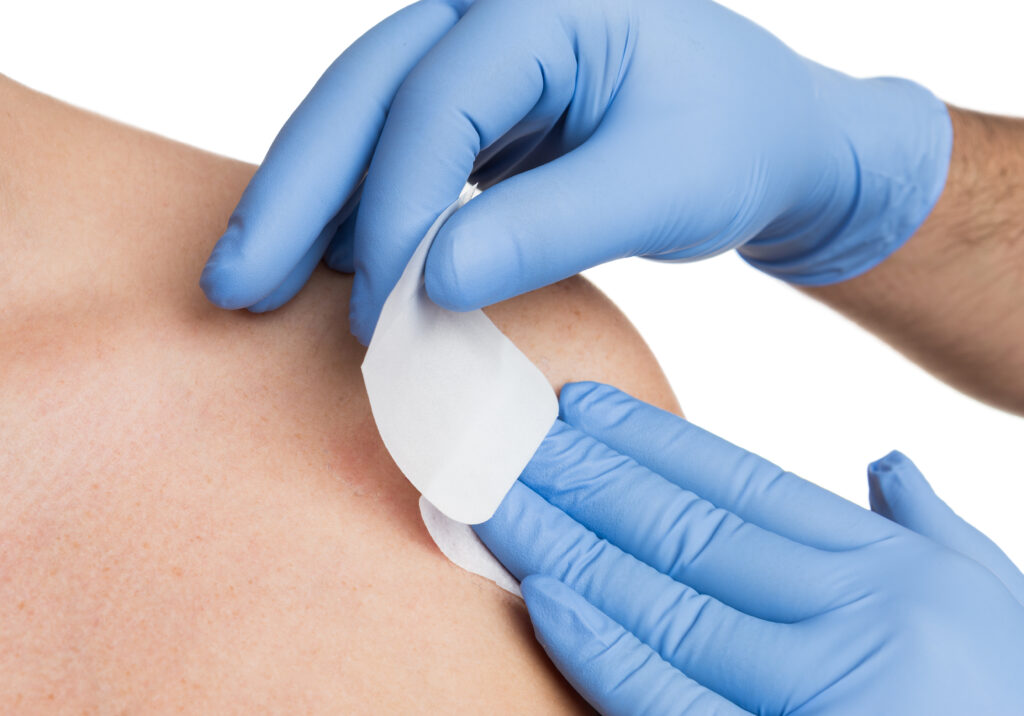The word “melanoma” can be unsettling, and even after successful removal with Mohs surgery, many patients are unsure what comes next. If you’ve recently undergone this precise skin cancer treatment, you’re likely wondering how long healing will take, what symptoms are normal, and how to reduce scarring.
At SkinSmart Dermatology in Sarasota, FL, Dr. Elizabeth F. Callahan leads one of the region’s most experienced teams in skin cancer care. Dr. Callahan has performed thousands of skin cancer removals as a fellowship-trained Mohs surgeon and board-certified dermatologist. She and Dr. William Adams are among only 117 dermatologists in Florida accredited by the American College of Mohs Surgery, with more than 20,000 Mohs procedures completed.
Recovery After Mohs Surgery for Melanoma
Healing after Mohs surgery is typically straightforward, especially when patients follow the recommended aftercare guidelines. While everyone heals at a different pace, most people experience minor discomfort and swelling that gradually fade. Here’s what you can expect during recovery:
- Mild swelling and tenderness: These symptoms typically peak in the first few days and then improve.
- Bruising near the surgical site: This is common and fades within a week or two.
- Tightness or a pulling sensation: As the area heals, scar tissue may cause temporary tightness.
- Stitches or bandages: You may have sutures for 7–14 days, with a follow-up scheduled to remove them.
A complete recovery can take several weeks, especially if the surgical area was large or on a sensitive part of the face.
How to Care for Stitches After Mohs Surgery
Proper wound care plays a big role in how your skin heals. Following your Mohs surgeon’s instructions will help minimize scarring and reduce the risk of infection. Here are the basics:
- Keep the area clean and dry: Use gentle cleansers and avoid getting the site wet unless instructed.
- Apply ointment as directed: Most patients are prescribed petroleum jelly or antibiotic ointment.
- Use bandages properly: Changing your dressing regularly protects the area from irritation and infection.
- Avoid heavy activity: Limit exercise or movements that may stress the stitches.
Your SkinSmart Dermatology provider will send you home with written wound care instructions and may recommend their curated wound care kits for added convenience.
What to Avoid After Mohs Skin Cancer Surgery
Certain activities can interfere with healing, especially in the first two weeks. Here are a few things your provider may advise you to avoid:
- Vigorous exercise or bending: These can increase swelling and bleeding.
- Direct sun exposure: Sunlight can darken healing skin and worsen scarring.
- Alcohol and smoking: These slow the body’s ability to heal.
- Picking at scabs: Let the wound heal naturally to prevent delayed healing or infection.
Listening to your surgeon’s guidance—and following all post-op instructions—is key to a smooth recovery.
Recovery Support from Trusted Experts
Mohs surgery is one of the most precise and effective methods for removing skin cancer, but your recovery plays a key role in the outcome. Call 941-308-7546 to schedule your appointment and start your care with confidence.


